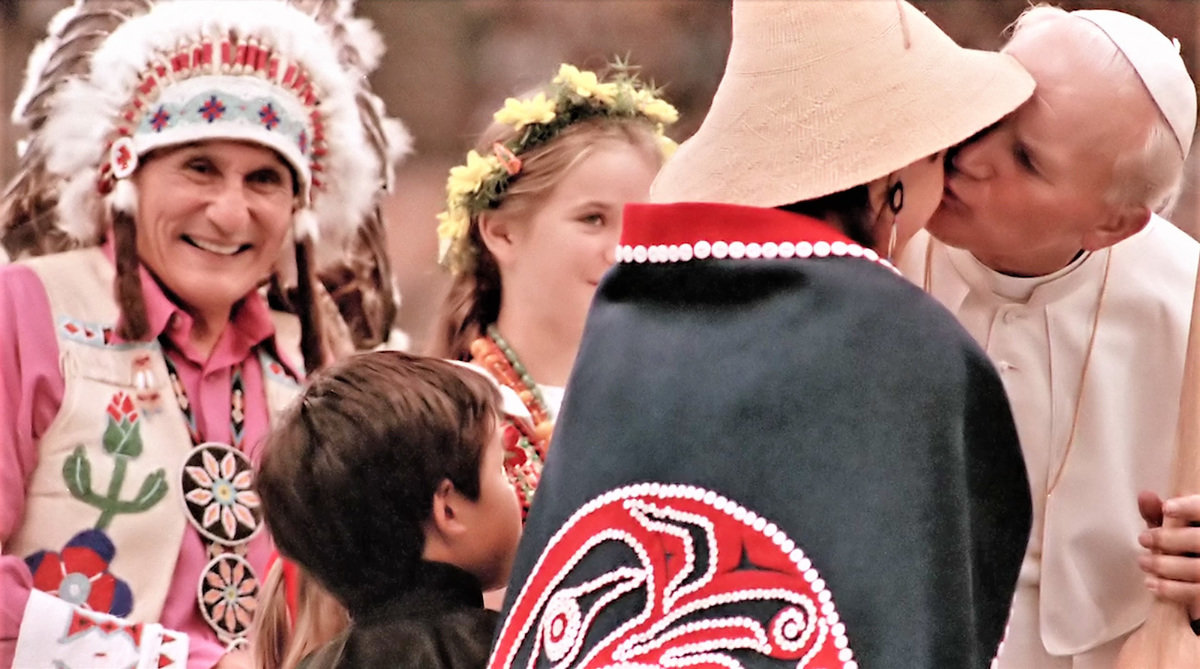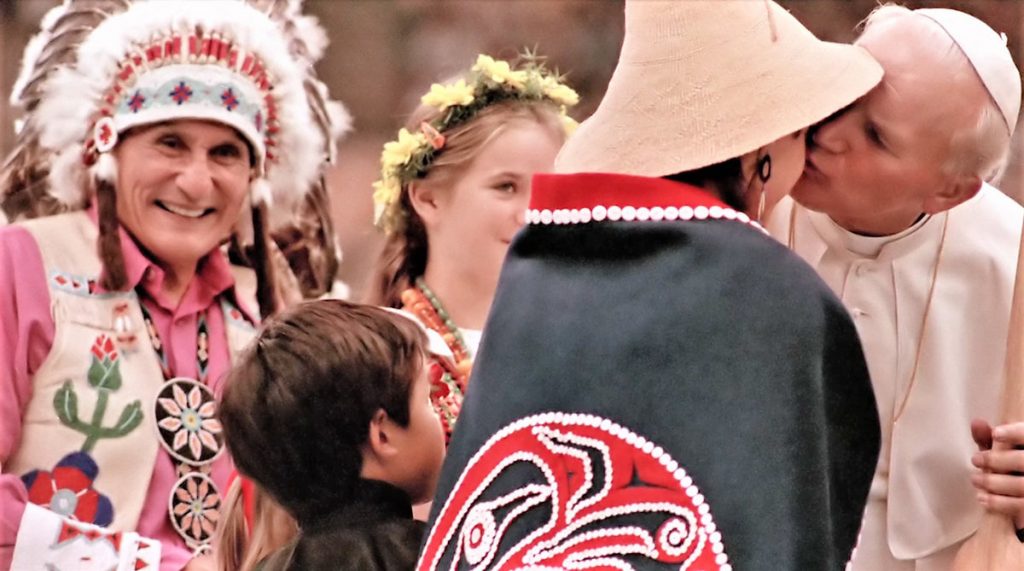

A new documentary produced by the Knights of Columbus, Enduring Faith: The Story of Native American Catholics offers a broad overview of the legacy of the Catholic faith among Indigenous communities across this continent.
With a running time of one hour and free to stream, the film will serve as an accessible and relatively quick introduction for viewers who are relatively unfamiliar with the topic. Those who already have a general sense of the hot button issues and big ticket items will discover few surprises, however, and may come away feeling less like they have watched a new stand alone piece than an extended teaser trailer for a dozen others.
The main strength of the piece is its breadth. Setting out to communicate a sweeping sense of how Indiginous Catholics continue to possess unique cultural identities and how these contribute productively to the diversity of North American Catholicism, Enduring Faith presents a kind of taster tray of small insights into several interrelated historical events, personalities, and ongoing social issues.
Notable historical events include the introduction of Christianity to this part of the world at the Spanish missions in Florida and the American west, as well as the miraculous apparition of Our Lady of Guadalupe, celebrated in the documentary as inspiring the largest conversion in world history.
One principal noted personality is the Francisican priest, founder of numerous missions, and early native rights advocate, St. Junípero Serra, affectionately known as the “Apostle of California.” Others include early influential converts like Grand Chief Membertou, leader of the Mi’kmaq community (present in areas including Nova Scotia, New Brunswick and Quebec), as well as St. Kateri Tekakwitha, the first canonized Native American saint.
While the documentary does acknowledge some problematic episodes from the past, civil and ecclesial, the emphasis of Enduring Faith is generally upbeat (less sympathetic viewers might call it airbrushed). Thus, while there are mentions of the forced relocation of entire people groups and the complicity of some religious communities in the policied cultural intolerance imposed at many residential schools, the focus generally shifts to ways in which interactions between indigenous communities and the Catholic faith have and continue to be constructive and mutually enriching.
For instance, one of the most intriguing topics touched upon is how indigenously cultivated spirituality, for a significant number of native North Americans, did not prove an impediment to ready acceptance of the Gospel but positively laid the groundwork for Christian belief. This seems to have been particularly the case for those communities who did not worship (or, more properly, adore in the theologian’s sense of worship properly only paid to divinity) water, animals, and other elements of the natural world, but venerate them.
In such cases, a fitting kind of reverence for God’s creation could be affirmed and then elevated by Christian missionaries in an enculturation process whereby indigenous beliefs were not only strengthened by Christianity, but strengthened it in turn. This process might continue today, for example, in the challenge such sensitivities to the natural world make to Christians everywhere who might, through them, recall God’s love of creation and the human need to discover and cultivate ways of living harmoniously with and within it.
They are little gems like these that make Enduring Faith a nourishing, encouraging, and, in the end, worthwhile watch. Even if a lot of the content will already be familiar to a lot of viewers, there will probably be at least something new for most.
You may walk away with only one or two new diamonds in your pocket, but I’d still call that an hour of attention well paid.
